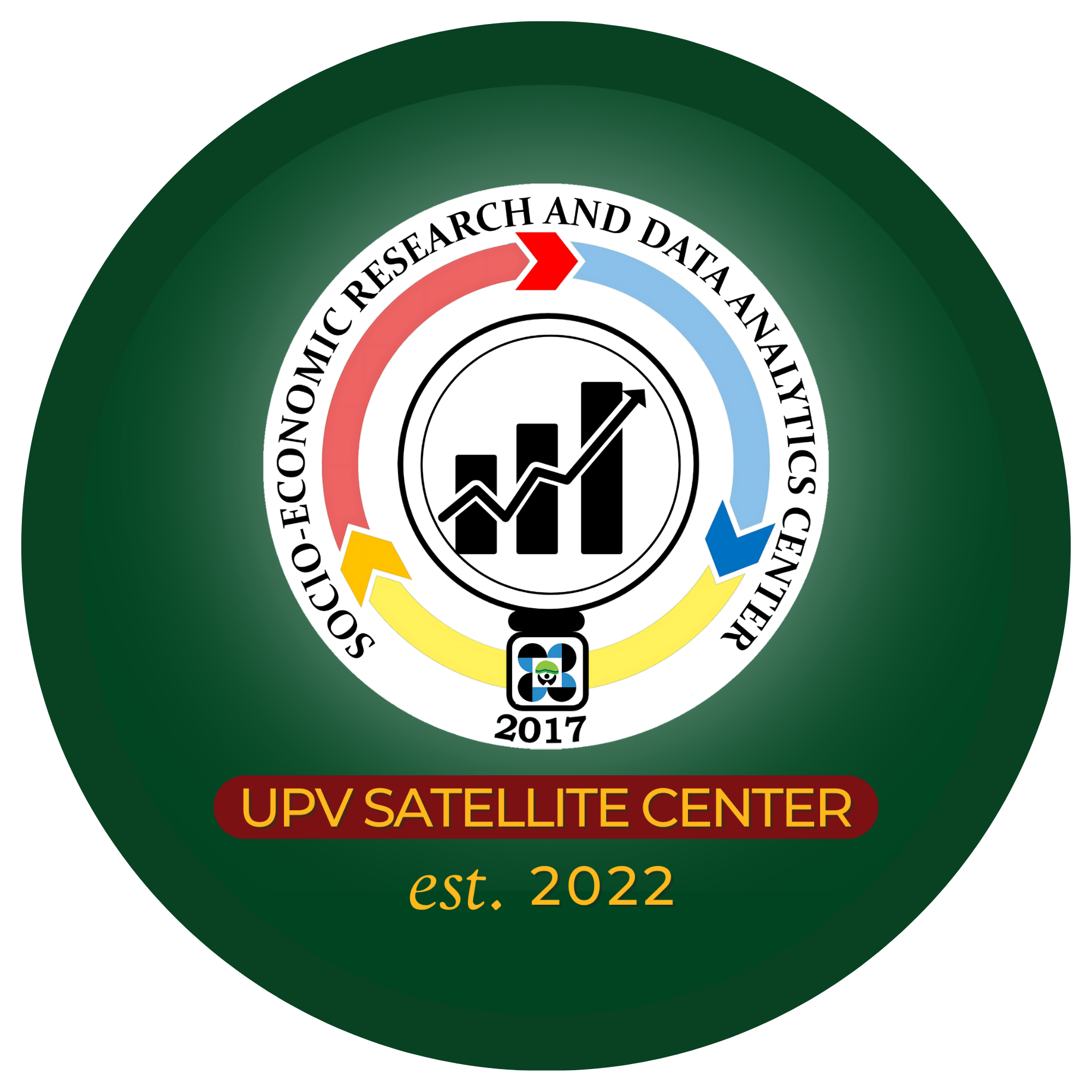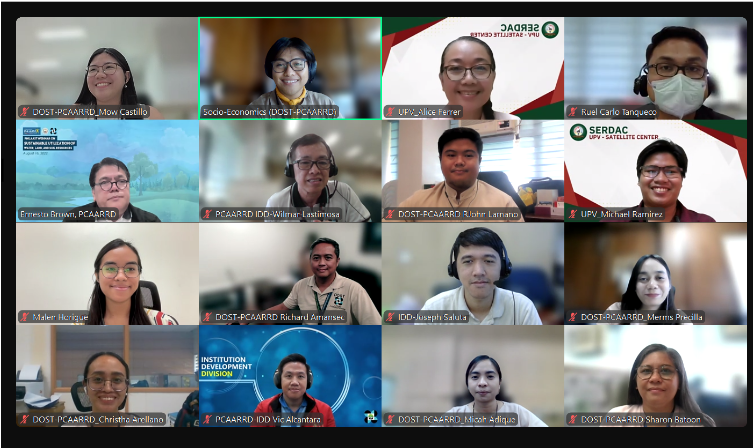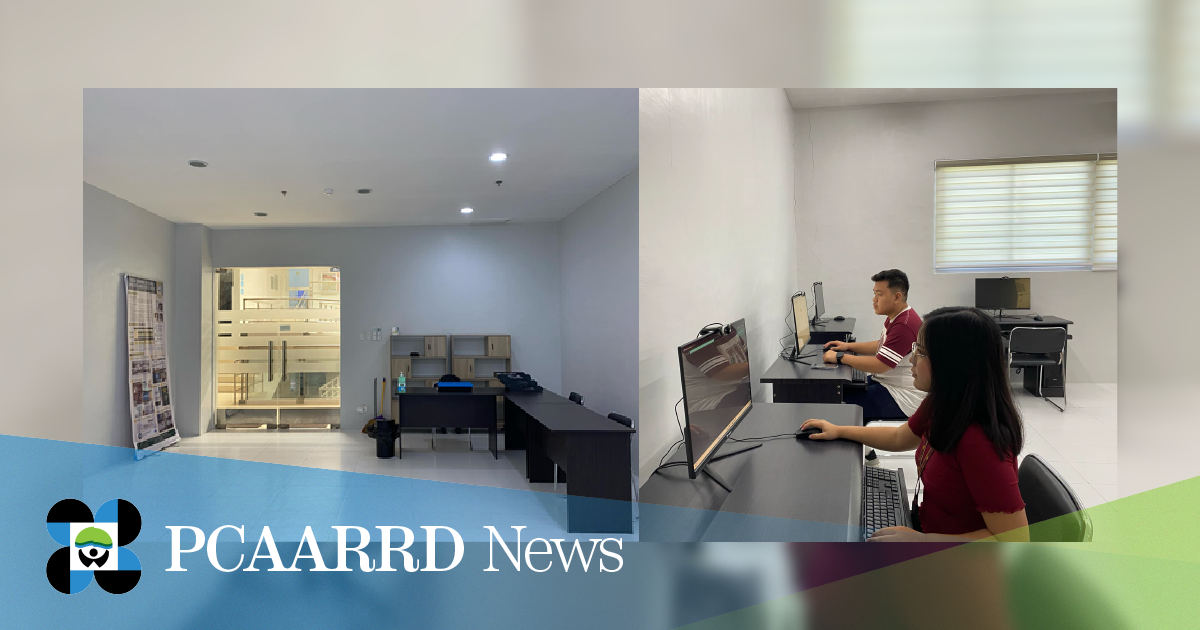
Data analytics is crucial for advancing research. Institutional support for research centers specializing in data analytics is a key step in creating a strong and sustainable research environment in the country.
Recognizing this need, the Philippine Council for Agriculture, Aquatic and Natural Resources Research and Development of the Department of Science and Technology (DOST-PCAARRD) continues to strengthen research capabilities nationwide through dedicated support for data analytics centers.
One of the Council’s latest initiatives is the project, “Improvement of the Satellite Socio-Economic Research and Data Analytics Center (SERDAC) in the University of the Philippines Visayas (UPV).” Led by Dr. Alice Joan G. Ferrer, the project aims to enhance the capacity of UPV’s center to provide technical services to its clients in Region 6. It will be equipped to support data-driven research and analysis in the region's agriculture, aquatic, and natural resources (AANR) sector by providing access to advanced tools and resources.
The project is part of a larger effort to develop a network of SERDACs across the country. It builds upon the first phase, "Development of Satellite Socio-Economic Research and Data Analytics Centers (SERDAC) for Improved Socio-Economic Research Capacity in the Philippines.” Additionally, the new phase focuses on acquiring state-of-the-art software and hardware that are necessary to further enhance the UPV center’s technical capabilities.
During the project’s inception meeting on August 7, 2024, Project Leader Alice Joan G. Ferrer presented key accomplishments, visions, and upcoming activities of the center. One of the major achievements is the establishment of a physical office in the Regional Research Center (RRC), which was granted to them by the university. The office will serve as the center’s training hub, which houses the project’s equipment.
The inception meeting was attended by the project team and internal evaluators from DOST-PCAARRD’s Socio-Economics Research Division (SERD), Office of the Deputy Executive Director for Administration, Resource Management and Support Services (OED-ARMSS), Institution Development Division (IDD), and Management Information Systems Division (MISD).
Ongoing improvement of the SERDAC at UPV signifies continuous effort of DOST-PCAARRD to advance data analytics in socio-economic research, particularly in regions where agriculture and natural resources play a vital role in economic development. As the center enhances its capabilities, it is poised to become a leading resource for data-driven insights in Region 6, supporting research, policy-making, and decision-making in the AANR sector.

Project inception meeting held via Zoom last August 7, 2024, with representatives from the project team (UPV) and DOST-PCAARRD (Image credit: SERD, DOST-PCAARRD)
Currently, DOST-PCAARRD supports a network of data analytics centers, which includes one main Socio-Economic Research and Data Analytics Laboratory (SERDAL) at the University of the Philippines Los Baños (UPLB); three main SERDACs situated at Central Luzon State University (CLSU), Visayas State University (VSU), and University of Southeastern Philippines (USeP); and four satellite SERDACs located at UPV, Bicol University (BU), Western Mindanao State University (WMSU), and University of Southern Mindanao (USM).
By fostering collaboration among various data analytics centers and ensuring that research outputs are systematically collected and curated, DOST-PCAARRD envisions to build a strong foundation for future socio-economic studies, ensuring that data analytics remains at the heart of research efforts in the Philippines.
With these initiatives, DOST-PCAARRD continues to lead the way in integrating data analytics into national research efforts, promoting a stronger and more resilient research environment.

